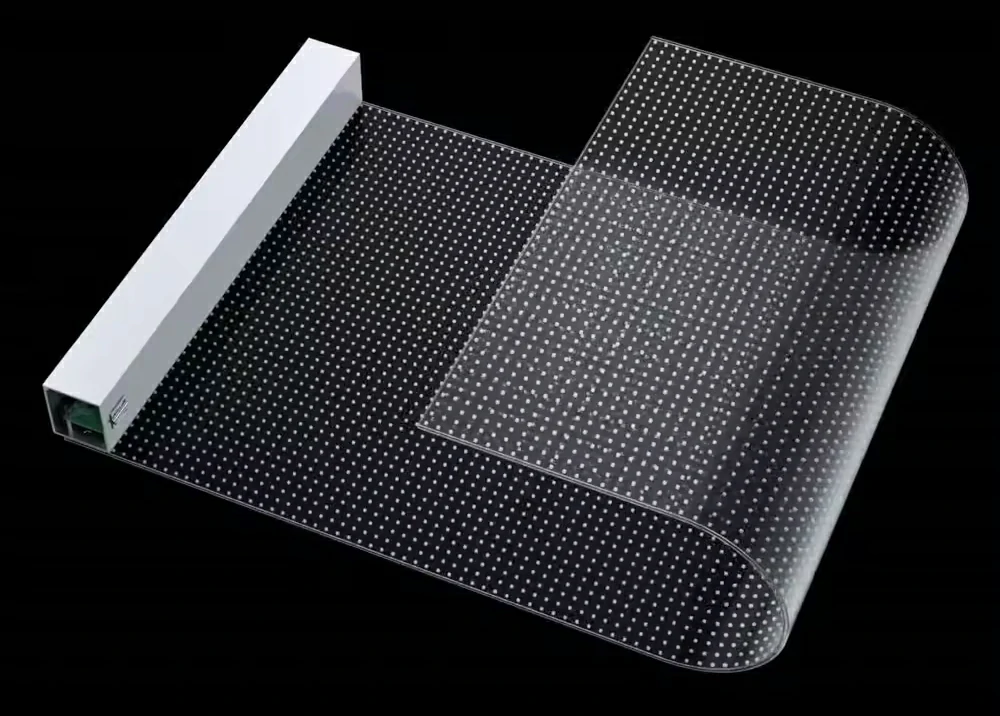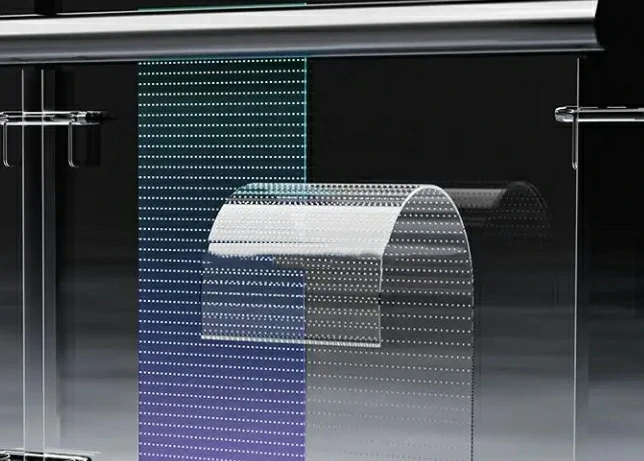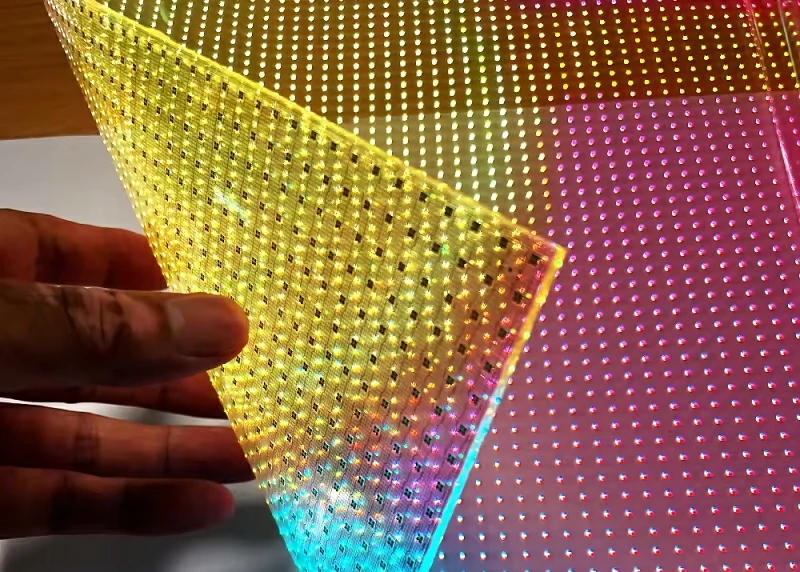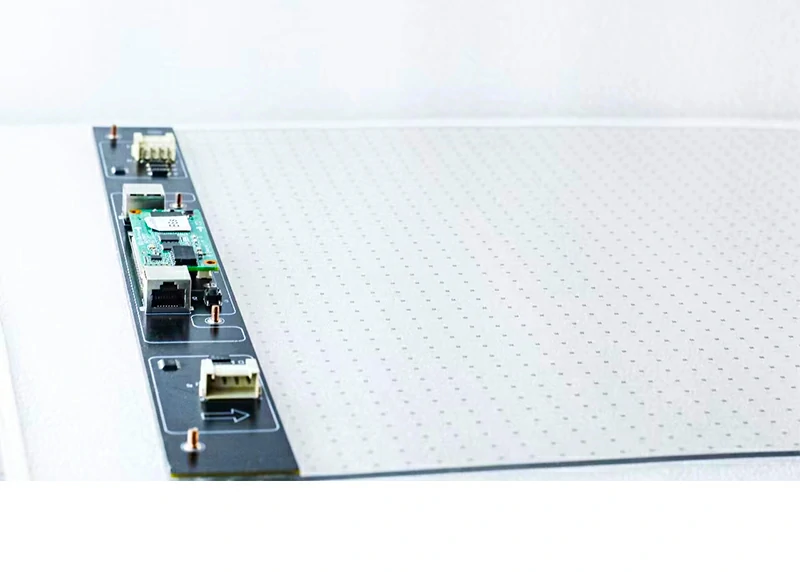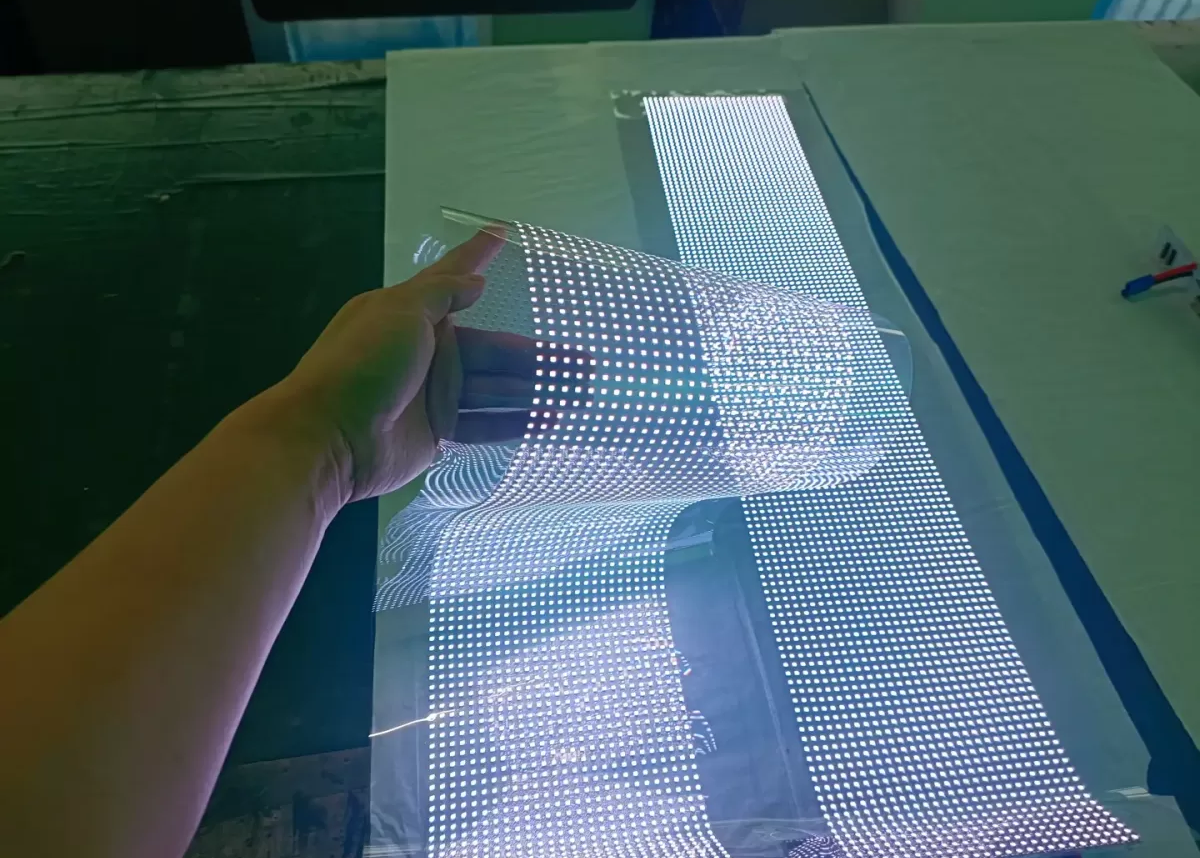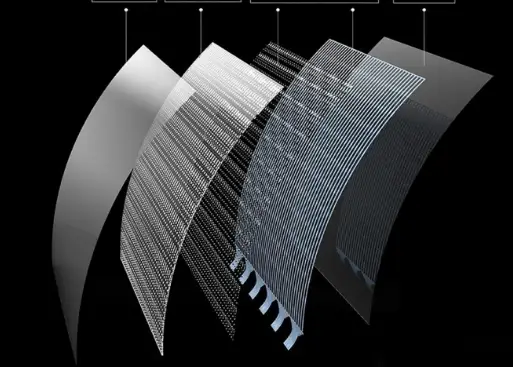There are many types of video walls on the market, including LED film screen video walls, LCD video walls, LED holographic screen video walls, and OLED video walls. Among them, LED film screen video walls are the most popular this year, followed by LED holographic screen video walls, and finally the well-established LCD video walls. The variety of video walls is due to different market needs. So, should we choose the most popular LED film screen video wall this year, or go with the well-established LCD video wall? Which one is better?
When choosing between an LED film screen video wall and an LCD video wall, it depends on the specific usage environment. There is no definitive answer to which is better, and the most popular option is not necessarily the best. Choosing the one that suits your needs is the best choice. You can compare the two types of video walls below to make an informed decision.
1. Differences Between LED Film Screen and LCD Splicing Screen
Light Source: Both the LED film screen and LCD splicing screen (early LCD screens used CCFL lamps) fall under the category of LED displays. Their light sources come from LED light-emitting diodes.
Production Process: The LED film screen consists of light-emitting pixels arranged in an LED matrix. In contrast, the LCD splicing screen uses an LED matrix as the backlight to illuminate the LCD screen. Their imaging principles differ; the LED film screen directly displays images through light-emitting pixels, while the LCD splicing screen displays images through the LCD screen.
Features: The LED film screen video wall has a unique advantage of full transparency, which is unmatched by the LCD splicing screen.
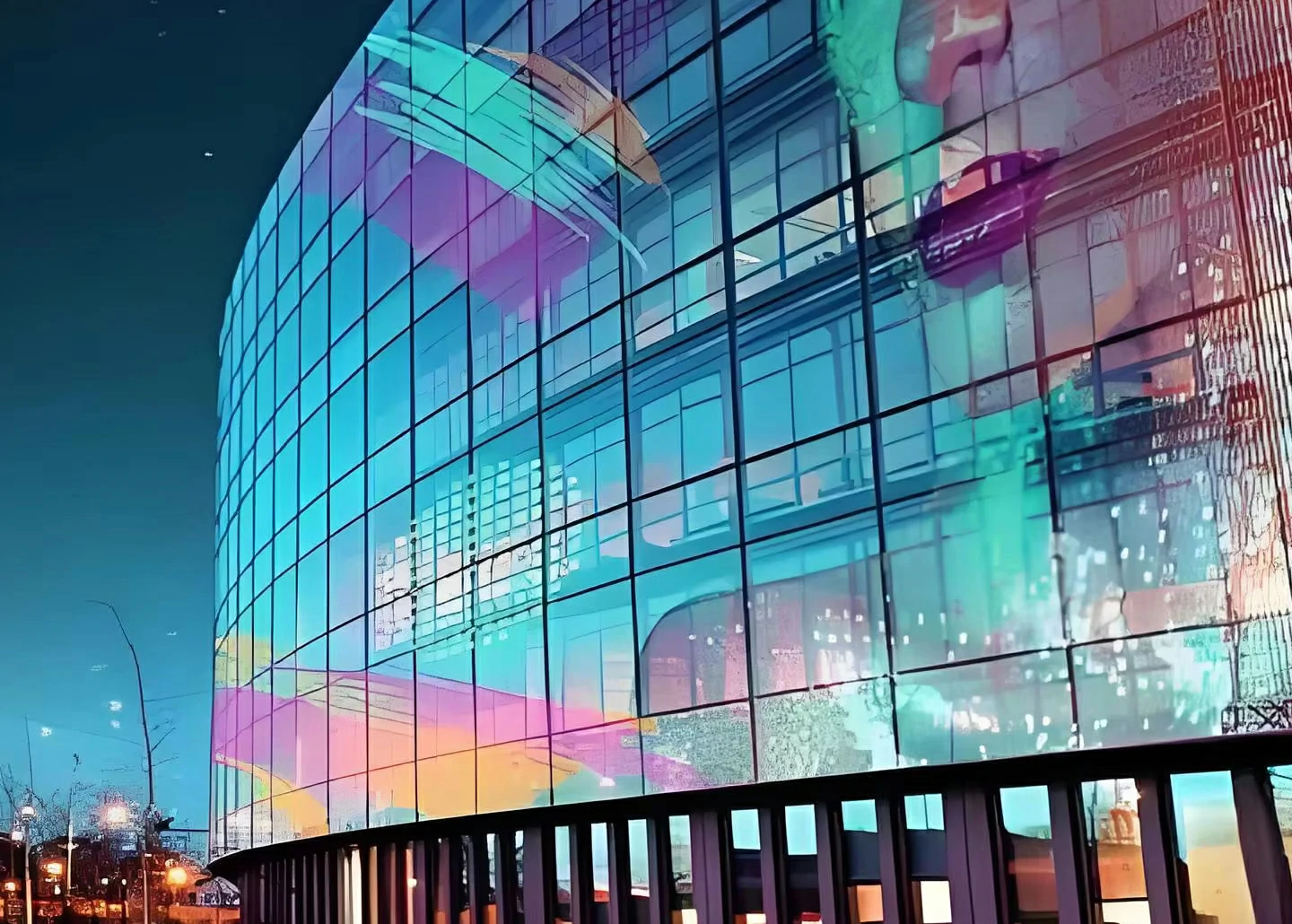
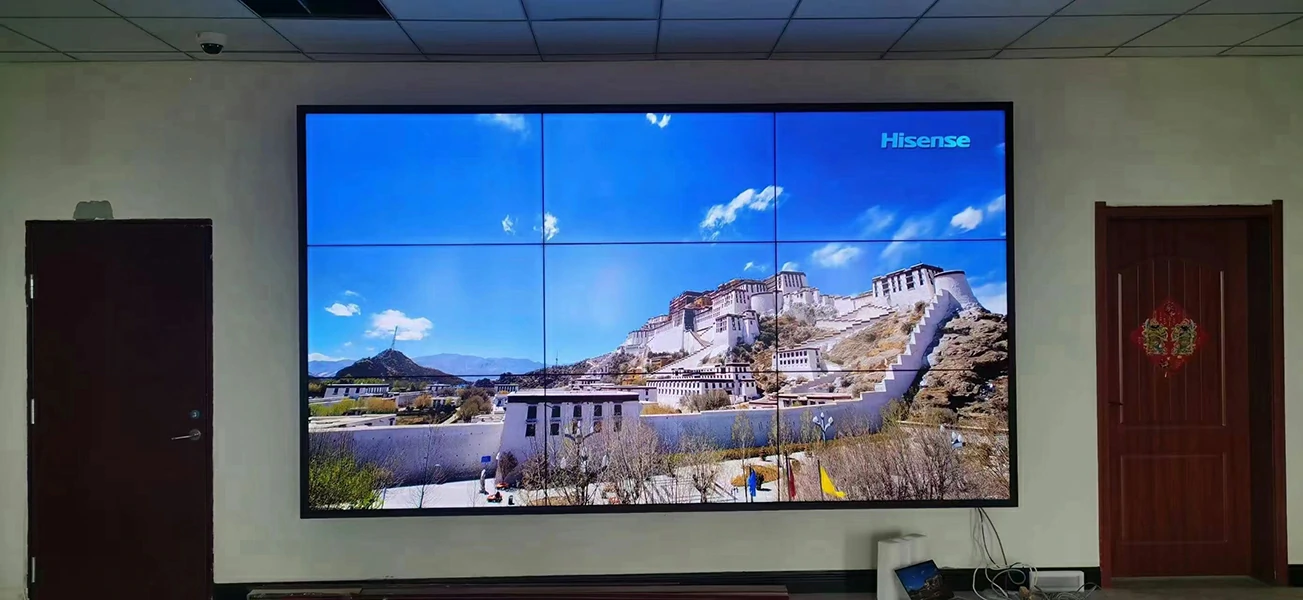
2. Image Quality
In the debate between LED film screen video walls and LCD video walls, image quality is one of the most contentious issues. LED film screens typically offer better image quality than LCD displays. From black levels to contrast and even color accuracy, LED film screens generally lead. In terms of viewing angles, there is usually no difference between LCD and LED video walls, as it depends on the quality of the glass panel used.
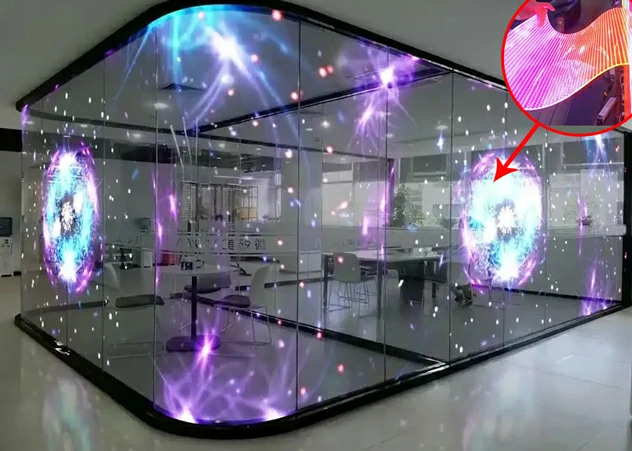
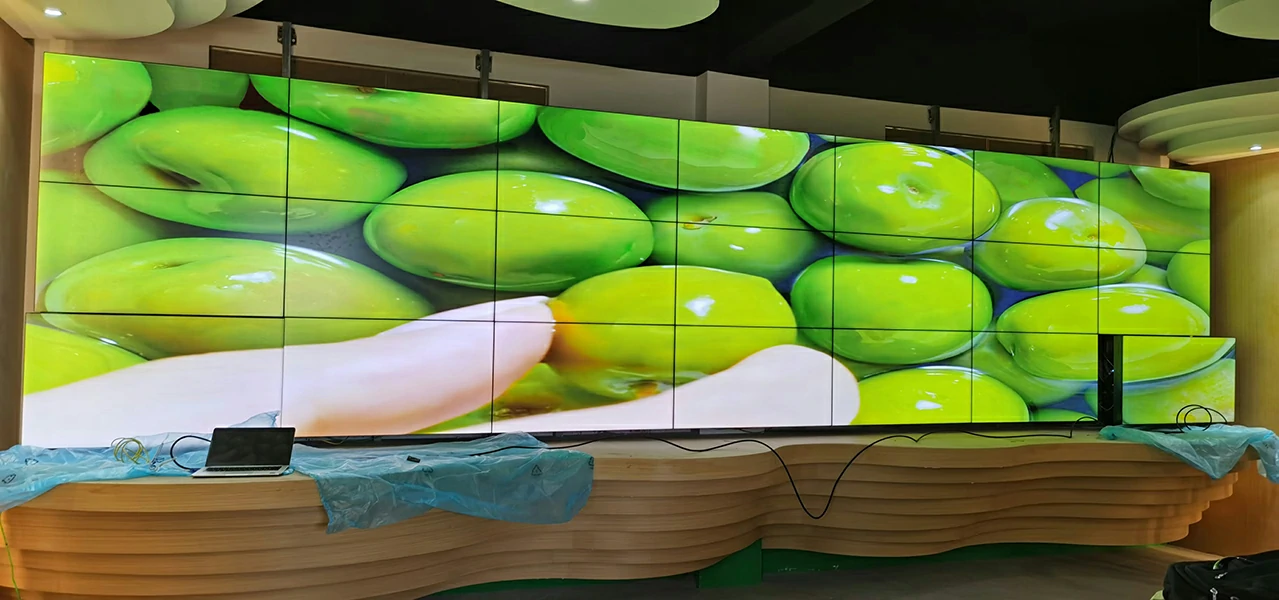
3. Splicing Gaps
One of the main differences and major considerations between LCD video walls and LED video walls is the bezel. Although the market heavily promotes small gap or gapless LCD video walls, the technology is not yet mature enough, with the smallest achievable gap being 0.88mm, which is still visible from any viewing distance. In contrast, LED film screen video walls can achieve seamless splicing, with no visible gaps when viewed from a distance, appearing as a single large screen.
4. Resolution and Pixel Pitch
Resolution affects the clarity of the content displayed on the screen, which is especially important for video walls as it determines the viewing distance. Higher resolution allows for clearer content when viewed up close, while lower resolution is better for viewing from a distance. This is related to pixel pitch.
Compared to LED film screen video walls, LCD display have much higher resolution. The pixel pitch of LCD display is much smaller than that of LED film screens. A 55-inch LCD display has a resolution of 1920×1080. The total resolution of the video wall depends on the number of panels it contains. For example, a 3×4 LCD video wall has a total resolution of 5760×4320. This makes LCD video walls ideal for control rooms, conference rooms, or reception areas where detailed and information-rich content is required.
The resolution of LED film screen modules varies depending on the pixel pitch. LED film screen module pixel pitches include P6, P6.25, P8, P10, P15, and P20. Among them, P6.25 is currently the most popular specification on the market. A 1000x400mm P6.25 module has a resolution of 160×40, and the total resolution of the video wall depends on the number of modules.
From the above comparison, it is evident that LCD has higher resolution and is very suitable for indoor viewing. They maintain clear and detailed images when viewed up close, such as in security and control rooms, simulation rooms, educational facilities, etc. LED film screen video walls are an excellent choice for large indoor venues where the display needs to be viewed from a distance, making resolution less critical. If you are looking for a bezel-less video wall for indoor environments with a greater viewing distance, then LED film screens are also a great choice as the importance of resolution diminishes. With the continuous reduction in pixel pitch of LED film screen modules, they may eventually surpass the application areas of LCD video walls in the future.
5. Video Wall Size
The placement location and required size of the display are important factors in determining which screen is suitable for you. LCD video walls typically cannot achieve the same large sizes as LED film screen video walls. Depending on the site needs, LCD video walls can be configured into different sizes, but they cannot achieve the same flexible and unlimited sizes as LED film screens, which can be made larger or smaller according to your needs.
6. Video Wall Brightness
The installation location of the video wall determines the required screen brightness. Shopping malls with large windows or ample light require higher brightness. However, in many control rooms, excessive brightness can have negative effects. If you work around it for long periods, you may experience headaches or eye fatigue. In this case, LCD is a better choice as it does not require particularly high brightness levels.
7. Contrast
Contrast is also an important factor to consider. It is the difference between the brightest and darkest colors on the screen. The typical contrast ratio of an LCD display is 1500:1, while LED can reach 5000:1. Full-array LED can provide not only high brightness but also more realistic blacks.
8. Energy Efficiency
Energy efficiency is a global responsibility to protect the environment. Low carbon and environmental protection are principles that all enterprises should follow. Commercial LCD video walls consume less power than LED film screens because LED film screen video walls require more energy to provide high brightness. LCD splicing screens produce uniform lighting but cannot reach the brightness of LED film screens. Therefore, LCD video walls are more energy-efficient and environmentally friendly.
9. Cost
In terms of price, LED film screens do not have the advantage over LCD splicing screens. If you are budget-conscious, LCD is the best choice. Usually, you can buy a larger LCD video wall for much less than an LED film screen video wall. Compared to similarly sized LED film screen video walls, LCD video walls are generally much cheaper. The lowest average price of an LCD video wall is $5,000-$6,000, while the price of an LED film screen is several times that of an LCD video wall, varying depending on the pixel pitch. For more information on the price of LED film screen video walls, you can contact us directly.
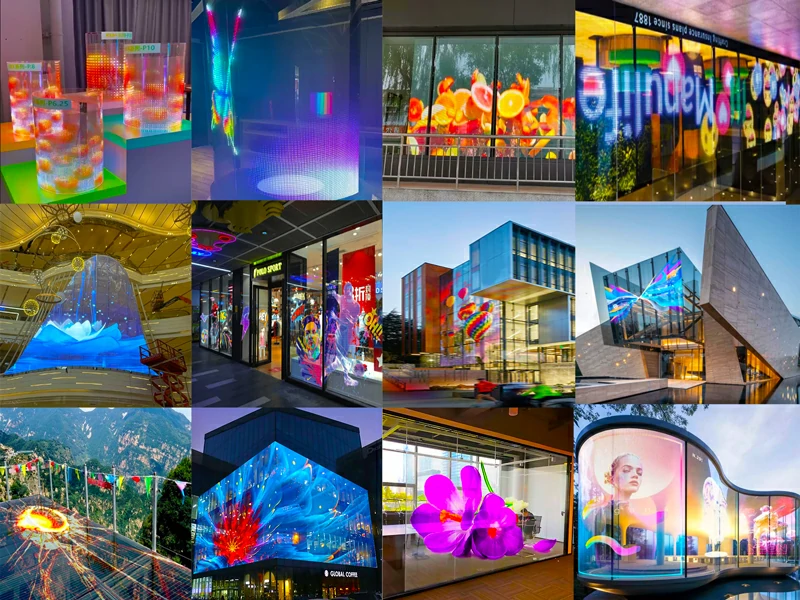
These are the factors to consider when choosing a video wall. By carefully reading the above content, you should have a clear idea of which type of video wall is suitable for you!

